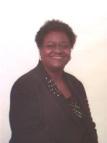|
As the Post-Civil War Holiness movement in America spread, there was ministry to or in association with African-Americans by Caucasian-Americans. African-Americans to whom or with whom Caucasian-Americans ministered include Amanda Smith, W. E. Fuller, Julia Hutchins and William J. Seymour. Their stories shed light on the impact of Wesleyan Holiness on racial interaction.
Amanda Smith (1839-1915) was a nineteenth-century Holiness evangelist. She had been a disciple of John S. Inskip. She traveled widely and was one of the most highly respected African-American evangelists of her time. The volume, An Autobiography: The Story of the Lord’s Dealing With Mrs. Amanda Smith, The Coloured Evangelist, published by Meyer and Brothers of Chicago, was widely read by African-Americans throughout the United States, especially southerners. Many African-Americans became a part of the Holiness movement as a result of reading this volume. This was especially true of southerners.1 Charles Harrison Mason, founder of Church of God in Christ claimed sanctification after reading Amanda’s work.2
William Edward Fuller (1875-1958)3 was a general board member of Fire-Baptized Holiness Church and overseer of the African-American branch of the denomination.4 He was born in Mountville, South Carolina. His parents were sharecroppers. He was raised Methodist, but became a part of the Holiness movement through the ministry of Benjamin H. Irvin. In 1897, Fuller joined the Fire-Baptized Holiness Association.
In 1898, at the organizational meeting of Fire-Baptized Holiness Church in Anderson, South Carolina, Fuller was elected to the denomination’s executive board. He organized over fifty African-American congregations of the Fire-Baptized church by 1900.5 In 1904, he organized four African-American Fire-Baptized congregations in South Carolina and Georgia. According to Fuller, during this period of ministry, five hundred persons were converted [to Christ].
In 1908, after ten years of being a part of the integrated Fire-Baptized church6, Fuller and his colleagues7 requested permission to separate from “the parent body”. The reason for the separation was given as “…criticism from the communities of the South against integrated church meetings”.8 Permission was granted and the separation was amicable. “The parent body” also deeded property to the newly formed African-American denomination known as Colored Fire-Baptized Holiness Church.9
In 1926, the denomination’s name was changed to Fire-Baptized Holiness Church of God of the Americas.10 Fuller was given the title of presiding bishop.11 By 1959, the year after his death, the denomination had 60 churches with over 6,000 members and 300 missions.12
Julia W. Hutchins was the pastor of a Holiness church in Los Angeles, California. The church was affiliated with Church of the Nazarene,13 founded by Phineas Bresee.14 In the Spring of 1905, after Julia and eight African-American families were asked to leave Second Baptist Church of Los Angeles, the church was formed.15 Second Baptist was an African-American church. Julia and the families had been “excommunicated” for “professing holiness doctrine”.16 Julia was the ostracized group’s leader.
After their expulsion, the group met at 214 Bonnie Brae Street, the home of Mr. and Mrs. Richard Asberry. After holding “effective public services” on Bonnie Brae Street, the group “leased a mission hall at 9th and Santa Fe”.17 The church also became a part of the Southern California Holiness Association.18 This was primarily an African-American organization.19
William Joseph Seymour (1870-1922) was the founder and pastor of Azusa Street Mission in Los Angeles, California20 and co-founder of the modern Pentecostal movement.21 He was born May 2, 1870 in Centerville, Louisiana. His parents, Simon and Phillis Seymour, were former slaves. William was raised Baptist.22
In 1895, William moved to Indianapolis, Indiana. There he joined an African-American congregation of the Methodist Episcopal Church. He came in contact with the Holiness movement in Cincinnati, Ohio through a movement, God’s Revivalist, founded by Martin Wells Knapp. Seymour lived in Cincinnati from 1900 to 1902.
>
After being sanctified, Seymour joined Church of God Reformation. Daniel S. Warner founded the church in 1880. Its headquarters was located in Anderson, Indiana. The church was also known as Evening Light Saints. After an illness of smallpox, during which he lost an eye, Seymour accepted the call to preach. He was licensed and ordained by Evening Light Saints.
Seymour moved to Houston, Texas in 1903. In October 1905, he enrolled in The Bible Training School, founded by Charles Fox Parham (1873-1929). Seymour had come in contact with Parham through Lucy Farrow. Lucy, an African-American and niece of abolitionist Frederick Douglas, was the pastor of the Holiness church Seymour attended after moving to Houston. In 1905 she left the Houston pastorate (with Seymour as interim pastor) to work for Parham as a governess. While there, she was baptized in the Holy Ghost and spoke in tongues.23
Parham, a Caucasian-American, had been “a Methodist supply pastor in Linwood, Kansas. From the Methodist Church, he received the teaching of entire sanctification as a second work of grace. He also adopted the doctrine of divine healing as a part of the atonement from the Holiness movement. From Fire-Baptized Holiness Church, he accepted the teaching of Holy Ghost baptism as a third experience, but rejected the extreme emotionalism of the Fire-Baptized movement. After 1895, when many persons were leaving the Methodist Episcopal Church,” he left also. “Parham was the first person to single out glossolalia [speaking in tongues] as the evidence of Holy Ghost baptism. He taught that it should be a normal part of Christian worship rather than a by-product of religious enthusiasm.”
“Segregation dictated that Seymour could not attend The Bible Training School. However, Seymour’s desire to attend and his thirst for knowledge led Parham to allow him to attend classes during the day. Through these classes, Seymour was taught that the Holiness movement had been wrong to assert sanctification was also the baptism of the Holy Ghost.
Parham taught the baptism of the Holy Ghost was a third experience separate from the second blessing. He further taught sanctification cleansed and purified the believer, but the baptism of the Holy Ghost empowered the believer for service. He also taught the only biblical evidence of one having received Holy Ghost baptism is speaking in tongues.”
During services held at The Bible Training School, many Houstonians were baptized in the Holy Ghost. One such person was Neely Terry, an African-American from Los Angeles, California. Upon returning to California, Neely “found her family and friends excommunicated from…Second Baptist Church.” This was the group led by Julia Hutchins. In March of 1906 Neely recommended calling Seymour to pastor the mission.24
After arriving in California, Seymour became friends with W. H. McGowan, a Caucasian-American. McGowan and his family were members of a church in the same General Assembly as the church pastored by Julia Hutchins. Seymour was on fire with news Holy Ghost baptisms in Houston and Kansas. McGowan went to hear Seymour preach at Julia Hutchins’ church at 9th and Santa Fe. The church was located not far from where the McGowans lived.25
“Seymour preached his first sermon at the Nazarene mission from Acts 2:4. He declared speaking in tongues was the initial evidence of one having received the Holy Ghost.”26 “McGowan asked the General Superintendent of their denomination to come and hear Seymour preach. The Superintendent did so. After hearing Seymour, he stated he was glad Seymour wanted the baptism of the Holy Ghost and hoped he would soon receive it. He further stated their assembly already had it, having received it at sanctification. He also stated their church did not believe speaking in tongues is for today.
After the service, the Superintendent asked Seymour not to preach that doctrine anymore in that church.”27 Julia Hutchins “padlocked the mission door the next night to keep [Seymour] out. Although [Julia] Hutchins thought Seymour’s message was contrary to Holiness views, most of the mission’s members accepted it.”
After being expelled from the Church of the Nazarene mission, Seymour began conducting prayer services at the home of Richard Asbury located at 214 Bonnie Brae Street.28 In attendance at the March 26, 1906 meeting was Frank Bartleman. Bartleman, a Caucasian-American, “had previously met Seymour at a cottage meeting in another place.” Bartleman was one among Holiness Christians in Los Angeles who, in December 1905, prayed for an outpouring of the Holy Ghost.29
| 
